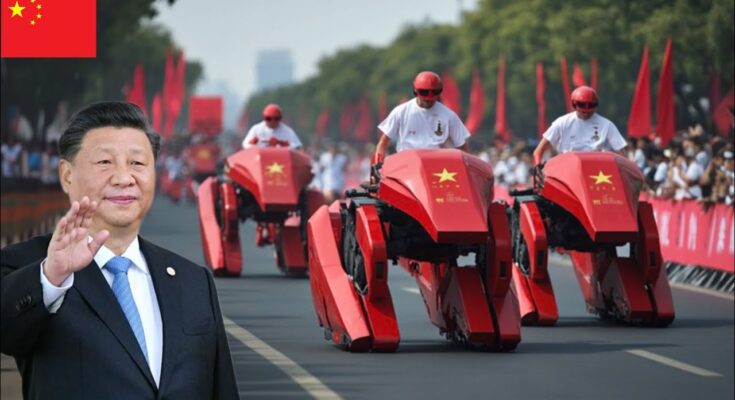The world is witnessing a technological leap with the emergence of a new generation of humanoid robots and specialized androids. No longer confined to the pages of science fiction, these machines are stepping onto factory floors, logistics centers, and public stages, demonstrating capabilities that are astonishing engineers and promising to fundamentally reshape industries from manufacturing to retail. This parade of innovation, featuring cutting-edge developments from Japan, China, the US, and Europe, highlights a global race to create machines that are not just tools, but intelligent, autonomous collaborators.
The Pursuit of Realism: Bridging the Human Gap
A significant trend in modern robotics is the quest for hyperrealism—a challenge often referred to as crossing the “uncanny valley.”
Leading this charge is Anne, a creation by Japanese engineers at Alab. Anne represents a true embodiment of this pursuit, featuring strikingly lifelike eyes, intricately detailed skin, and natural facial expressions. Designed for public events and exhibitions, Anne’s role is a presentation character, engaging with people in a limited but compelling way.
Similarly, the British company Engineered Arts has continuously refined its Ameca robot. The latest version is capable of reproducing a wide range of emotions through a complex system of micro-actuators beneath its synthetic skin. Ameca combines neural networks, computer vision, and advanced mechanics to engage in natural dialogue and adapt its behavior in real-time, making it one of the world’s most advanced platforms for human-robot interaction.
Humanoids on the Factory Floor: The Industrial Revolution 4.0
The primary battleground for this new wave of robotics is the industrial sector, where humanoids are proving their worth in complex, repetitive, and heavy-lifting roles.
In China, Jiuan Robotics has introduced the Agabot G1, a versatile humanoid that is already beginning to replace human labor on factory floors. The robot is equipped with powerful actuators and an optional tactile hand for fine manipulation, enabling it to perform delicate tasks such as unscrewing caps or soldering. Its intelligence platform, powered by artificial intelligence based on deep reinforcement learning, allows it to flexibly adapt to new tasks and environments.
European companies are also defining the industrial future. The Swedish company Hexagon developed AON, a 180 cm tall robot designed specifically for factories and logistics. AON utilizes a unique design, combining two legs with motorized wheels to provide both stability and agility, allowing it to rapidly move through industrial spaces. Meanwhile, France’s Wandercraft unveiled Calvin 40, built to handle the truly heavy-duty work. This imposing machine is designed to lift and carry loads of up to 40 kg, moving across uneven surfaces with an active balance system, making it ideal for the most demanding production lines.
Logistics, Autonomy, and All-Terrain Mobility
The versatility of these robots extends far beyond stationary assembly lines.
The American company Figure is making remarkable strides in the logistics space with its Figure02 humanoid. This upgraded robot is designed for seamless collaboration alongside humans, specializing in conveyor belt work. Figure02 can autonomously recognize objects, sort parcels, orient boxes by barcodes, and carry significant loads up to 25 kg. Equipped with multiple cameras and an Nvidia GPU platform, it is built to adapt to the fast-paced nature of modern supply chains.
In a stunning demonstration of retail autonomy, Agility Robotics’ Digit showcased its ability to perform an autonomous shopping trip. Digit successfully selected items from a shelf, recognized objects, planned its motion, and executed precise grasping movements, marking a significant step toward future retail and service roles.
Finally, the Chinese-developed Tiangong 2.0 showcases the future of robust, all-terrain mobility. This model can confidently navigate complex terrain—including stairs and snowy surfaces—at speeds of up to 12 km/h. Equipped with a hot-swappable battery system for continuous operation, Tiangong 2.0 is poised for use in industry, logistics, and critical emergency services.
The rapid advancements in realism, industrial specialization, and autonomous navigation are a powerful indicator of where technology is headed. The era of the true humanoid robot has officially begun.



